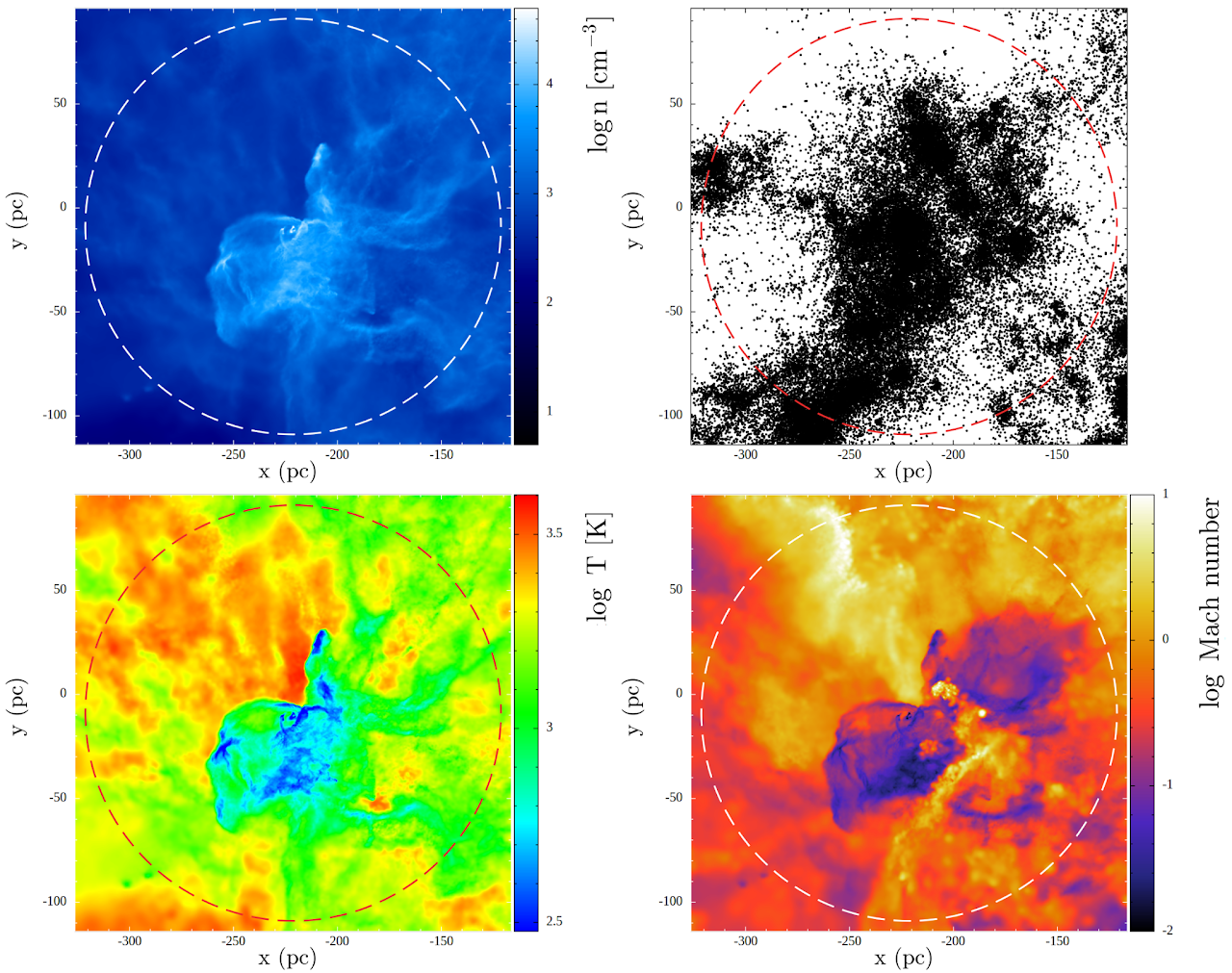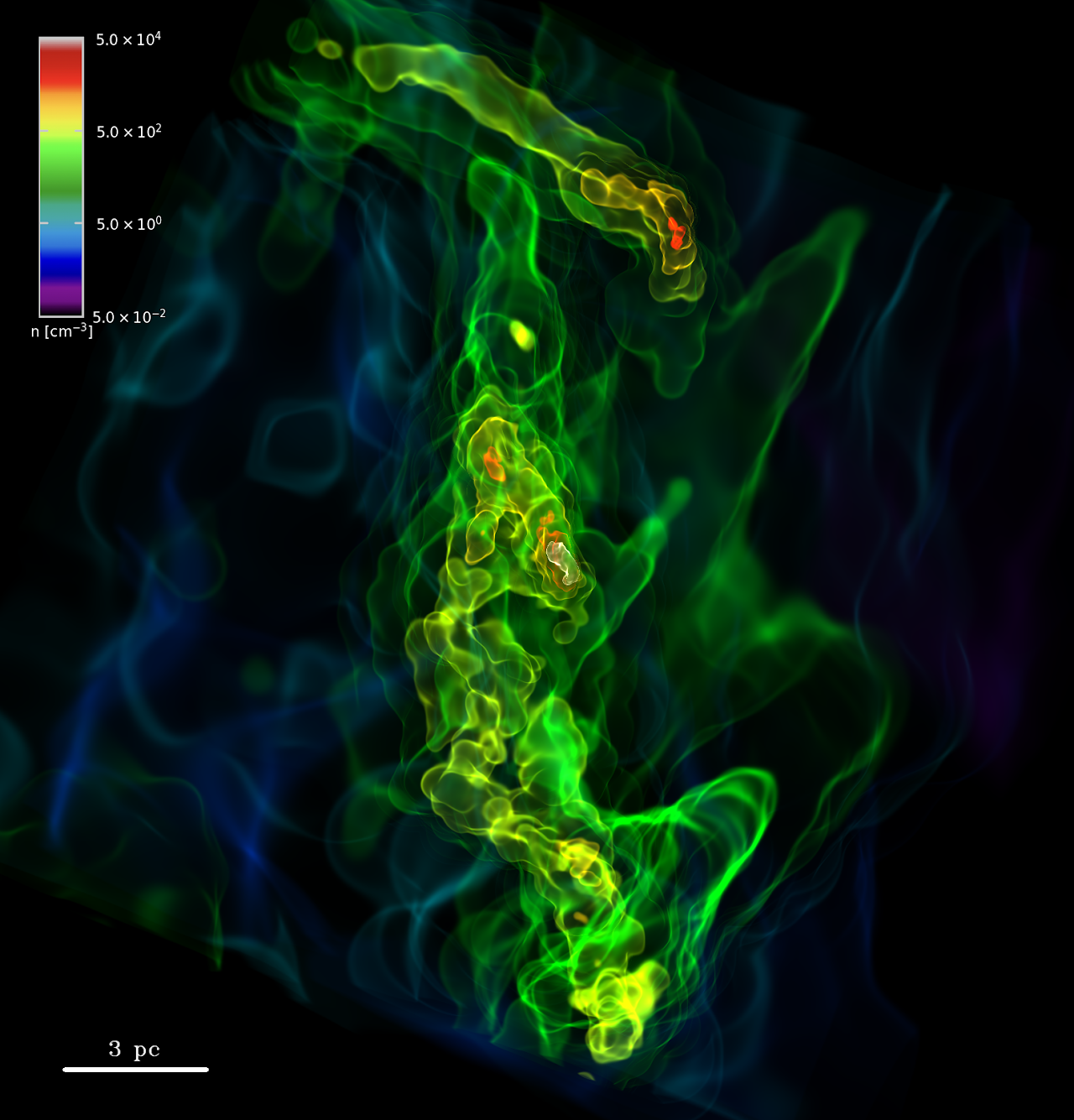12.08.2025
Scientists have long wondered what the Universe looked like before the first stars flickered into existence. Now, a groundbreaking simulation led by Ke-Jung Chen and his team at Academia Sinica Institute of Astronomy and Astrophysics reveals that the Universe’s first star-forming clouds were anything but tranquil—they were turbulent, clumpy, and supersonic. The results have been published in the latest issue of the Astrophysical Journal Letters.
Using the cutting-edge GIZMO simulation code and high-resolution cosmological data from the IllustrisTNG project, the researchers zoomed in on a single dark matter minihalo—a dense structure about 10 million times the mass of our Sun—forming just a few hundred million years after the Big Bang. By boosting the simulation’s resolution over 100,000 times through a technique called particle splitting, the team was able to track gas dynamics on scales down to a fraction of a parsec.
Their findings are striking: as the gas falls into the gravitational well of the dark matter minihalo, it generated supersonic turbulence with characteristic speeds five times faster than the speed of sound. This turbulence shredded the primordial cloud into multiple dense clumps, including one poised to form a star about eight times the mass of the Sun.
“This is the first time we’ve been able to resolve the full development of turbulence during the earliest phases of the first star formation,” said Chen. “It shows that violent, chaotic motions were not only present—they were crucial in shaping the first stars.”
Contrary to earlier models that envisioned the first stars as solitary behemoths forming through smooth, monolithic collapse, this study suggests that turbulence-driven fragmentation could have broken the cloud into smaller pieces. That means the first stars may have been less massive and more numerous than previously believed.
These results help explain the lack of chemical fingerprints from massive first stars in the oldest stars we observe today. Stars above about 100 solar masses are expected to explode as pair-instability supernovae, leaving behind distinct chemical signatures—but these have never been conclusively detected. The new simulations imply such massive stars may have been rare.
Moreover, the findings open new avenues for understanding early-universe magnetic fields, the formation of black holes, and the origin of the chemical elements. Supersonic turbulence is known to amplify magnetic fields and shape star formation in modern galaxies—its role in the first galaxies may be just as vital.
“This simulation represents a leap forward in connecting large-scale cosmic structure formation with the microscopic processes that govern star birth,” said Chen. “By uncovering the role of turbulence, we’re one step closer to understanding how the cosmic dawn began.”

Gas accretion during the assembly of a minihalo: The images from left to right show different moments in the dark matter minihalo's formation. The lines show the direction the gas is moving. At first, the gas is spread out and smooth. But as the minihalo takes shape, the gas becomes more concentrated. Long, thread-like and lumpy structures appear inside the minihalo, likely caused by uneven streams of early-universe gas flowing inward. Image Credit: ASIAA/Meng-Yuan Ho & Pei-Cheng Tung

What a primordial halo looks like: These images show the gas density, dark matter, gas temperature, and Mach number at the end of the simulation. The dashed circle marks the inner 100 parsecs (pc) of the halo. The gas tends to gather where dark matter is most concentrated, following its structure closely. In the center, the gas is very turbulent, dense and cooler than the surroundings. This cooling happens because molecular hydrogen formed in dense gas helps the gas lose heat efficiently. Image credit: ASIAA/Meng-Yuan Ho & Pei-Cheng Tung

3D view of dense gas clumps in the halo center: This 3D image shows several dense gas clumps in the middle of the halo, shown as yellow to red blobs. One of these clumps has become dense enough to start collapsing under its own gravity—a process called Jeans instability. It is forming a first-generation (Pop III) star with a mass of about 8 times that of our Sun. Image credit: ASIAA/Meng-Yuan Ho & Pei-Cheng Tung
Quelle: Academia Sinica Institute of Astronomy & Astrophysics (ASIAA), Taiwan
